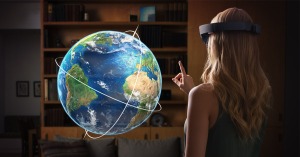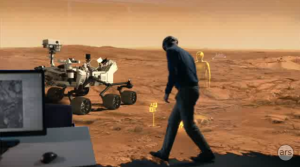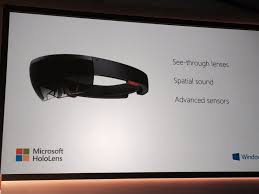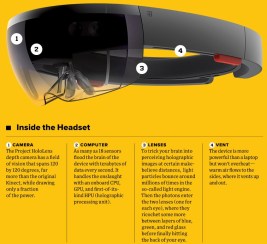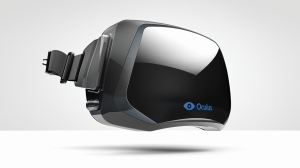This is Micorosft’s Hololens, and it has all the innards of a computer built directly into the headset. That means no cords or even a smartphone required. This is considered the most innovative gadget Microsoft has done in the last decades, completely changing game for the most hardware companies. The question everyone is asking is are we actually glimpsing the future? The Hololens is a sleek, futuristic headset with transparent lenses. They can make you see a 3D air floating around you and even creating your own version of the world and your living room covered in virtual characters running amok.
They promised this project a long time ago, but it we knew it will be worth waiting for. This is the next big breakthrough in the tech world. With these goggles, Microsoft is not trying to transport you to a different world, but rather bring the wonders of a computer directly to the one you’re living in. Microsoft is overlaying images and objects onto our living rooms. One really good perk is that you can still see the real world and you can wear them without bumping into walls or you co-workers.
The goggles will track your movements, watch your gaze and transform what you see by blasting light at your eyes (it doesn’t hurt). Because the device tracks where you are, you can use hand gestures — right now it’s only a midair click by raising and lowering your finger — to interact with the 3D images. The goggles also have a camera that looks at the room, so the HoloLens knows where tables, chairs and other objects are. It then uses that information to project 3D images on top of and even inside them — place virtual dynamite on your desk and you might blow a hole to see what’s inside.
The platform, which has been developed under tight secrecy on the Redmond campus, was introduced to a select number of developers in recent months. It has already drawn the interest of NASA, however. In a collaboration with Jet Propulsion Labs, the technology is being developed to allow scientists to interact and walk around in a projected version of the environment surrounding the Curiosity Mars rover. Eventually, the application—called OnSite— will allow scientists to interact with imagery in order to mark rocks and other geological features for the rover to investigate.
Obviously, Microsoft is still working out kinks and perfecting this thing, but it really looks convincing to me and I am sure it is the greatest achievement for Microsoft. They made the announcement at the Windows 10 launch, another hit for the titan Microsoft. I have seen reviews from several important magazines and sites and every single one of them think that they have a promising future, without doubt.
It could succeed where others have failed because Microsoft doesn’t intend it to be worn all the time and do everything.
The Hololens have a real rival, Oculus, which have been acquired last year by Facebook for $2 billion. Oculus has been in the hands of developers for the past year, allowing them the chance to create experiences for consumers that range from virtual trips and games to fitness classes. A release date for the consumer headset hasn’t been announced, however Oculus CEO Brendan Iribe hinted at a conference last year that 2015 could be the year. The price point is also unknown, however a developer’s kit currently sells on the Oculus website for $350 — a relatively attractive cost when comparing the wearable to Google Glass, which set users back $1,500.
I like them both, but I will considering buying the Hololens, of course, depending on it’s price and other features. I am looking forward for Microsoft to finally release a date for the goggles and I hope they will be as everyone is bragging it will be.

